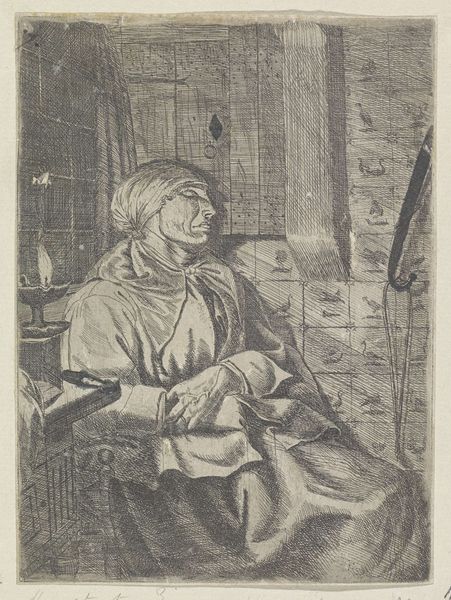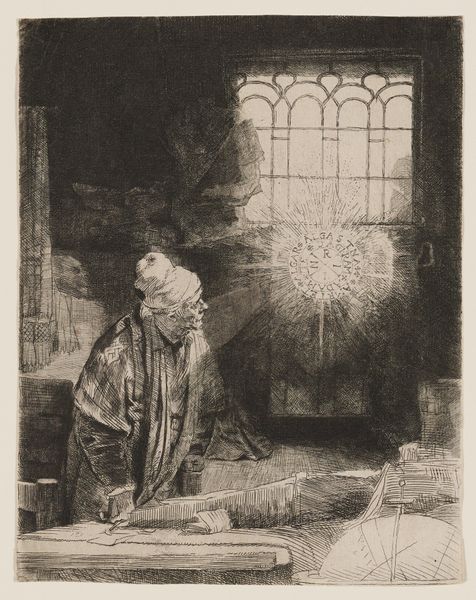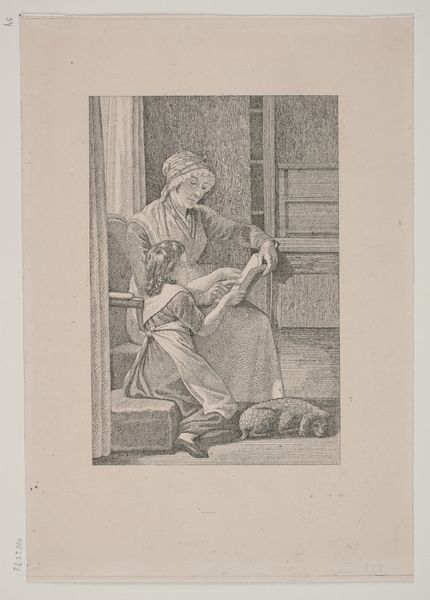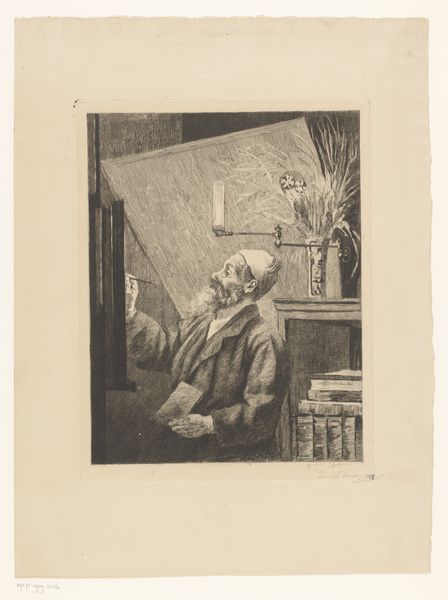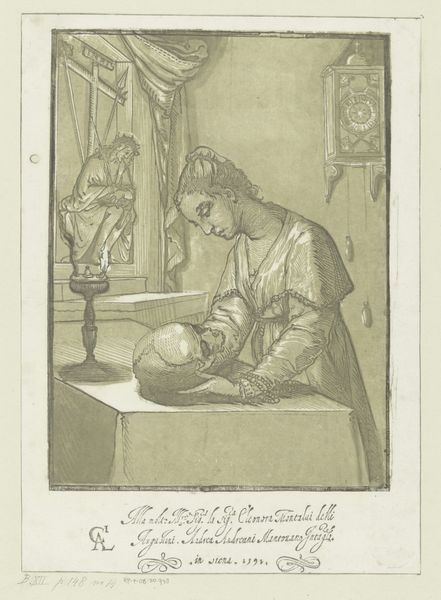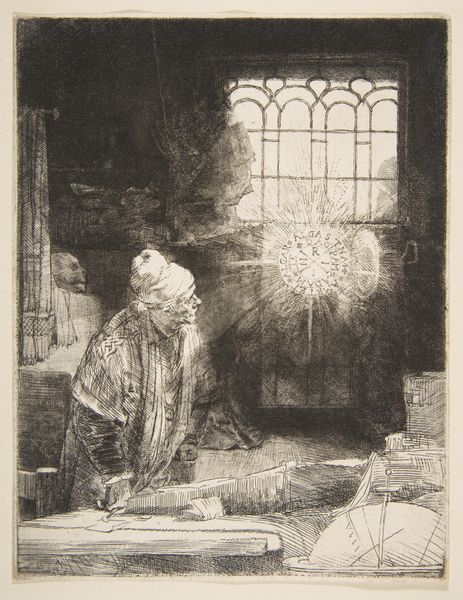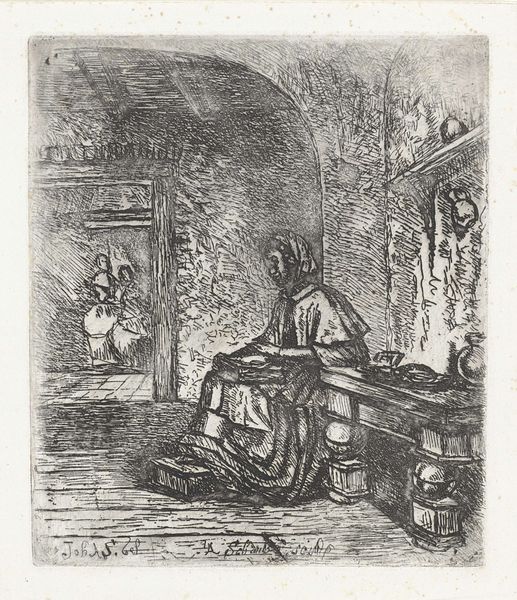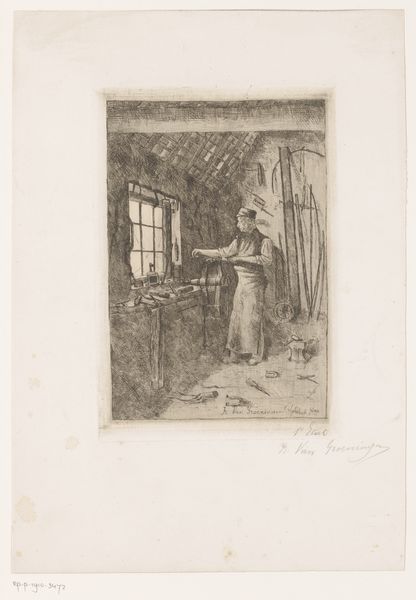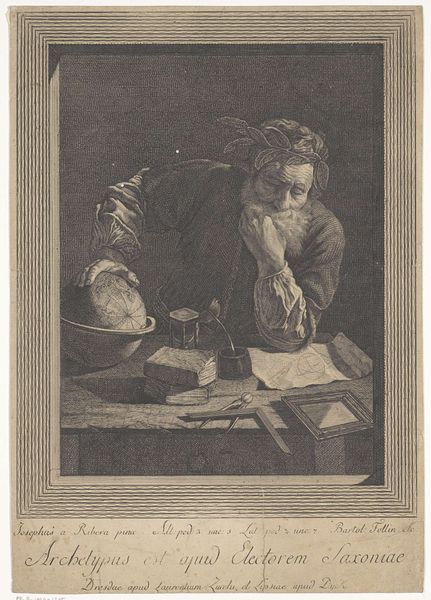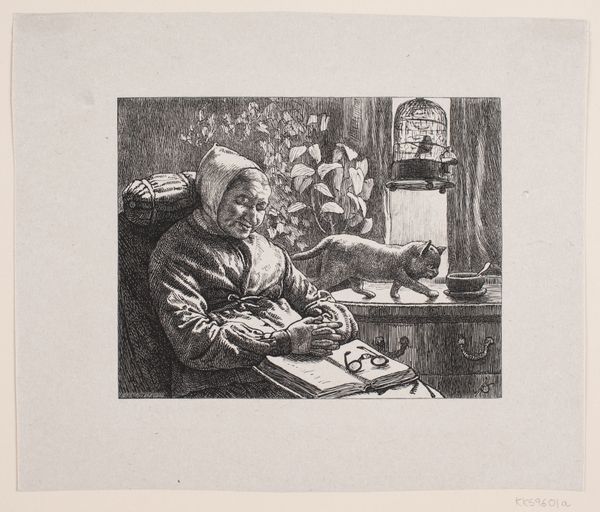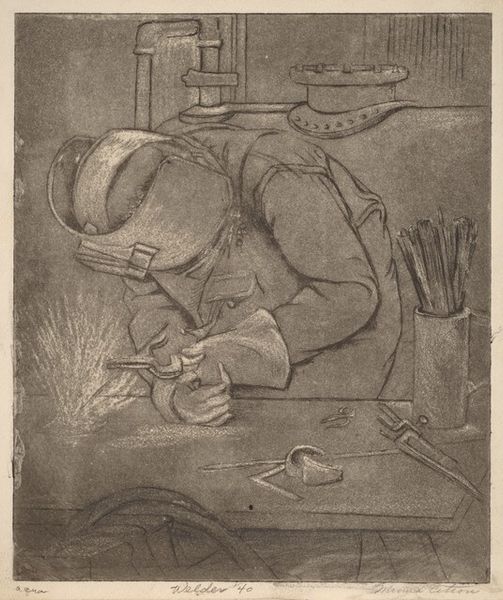
print, etching
#
portrait
#
narrative-art
#
baroque
# print
#
etching
#
chiaroscuro
#
history-painting
Dimensions: height 210 mm, width 160 mm
Copyright: Rijks Museum: Open Domain
Curator: What immediately strikes me is the luminosity. The stark contrast of dark and light, focused around that window, is breathtaking. Editor: Indeed. This etching, "Geleerde in zijn werkkamer (Faust)", which translates to "Scholar in his Study (Faust)," is attributed to Rembrandt van Rijn and estimated to date sometime between 1650 and 1808. The Rijksmuseum is fortunate to hold this impression within their collection. The magic really resides in Rembrandt's command of light. Curator: Absolutely. And that light is no accident. It’s drawing us into something more than just a realistic representation. That radiance emanating from the window seems almost supernatural, doesn't it? Symbolically charged. Editor: It’s fascinating how that radiating light frames the scholar, situating him, quite literally, within an atmosphere of intellectual enlightenment or perhaps divine knowledge. We must remember, narratives surrounding figures like Faust frequently wrestled with forbidden knowledge. Notice the book, the globe, and allusions to astronomical diagrams around him. The man’s pursuits straddle the boundaries of science, religion, and magic. Curator: Yes, you can almost feel the tension, that moment of potential revelation. It reflects, on one level, the psychological weight of knowledge itself and its transformative potential, echoing traditions from alchemy to early Rosicrucianism. Editor: And also the anxieties that those types of practices caused in their historical moment! Looking closely at the composition, note how the window is practically the brightest element, making knowledge, in its various forms, a character within the artwork. How might this single etching fit into the narratives of science versus magic and Protestant Reformation? Curator: Good point. One reading could definitely explore that moment of seeking something beyond the established religious doctrine of the time—of the scholar seeking new mysteries. Perhaps challenging those old establishments. It creates tension by blending sacred and profane imagery, posing questions about progress and tradition. Editor: I hadn’t quite thought of it in that sense, the visual elements that indicate tradition and establishment being literally challenged by forces that radiate beyond that very structure! What a beautifully provocative little print! Curator: Agreed. I see echoes of continuous cultural dialogue across centuries embedded within this etching's contrasting shadows and brilliant light.
Comments
No comments
Be the first to comment and join the conversation on the ultimate creative platform.
